How to buy a road bike - and 10 of the best under £5,000
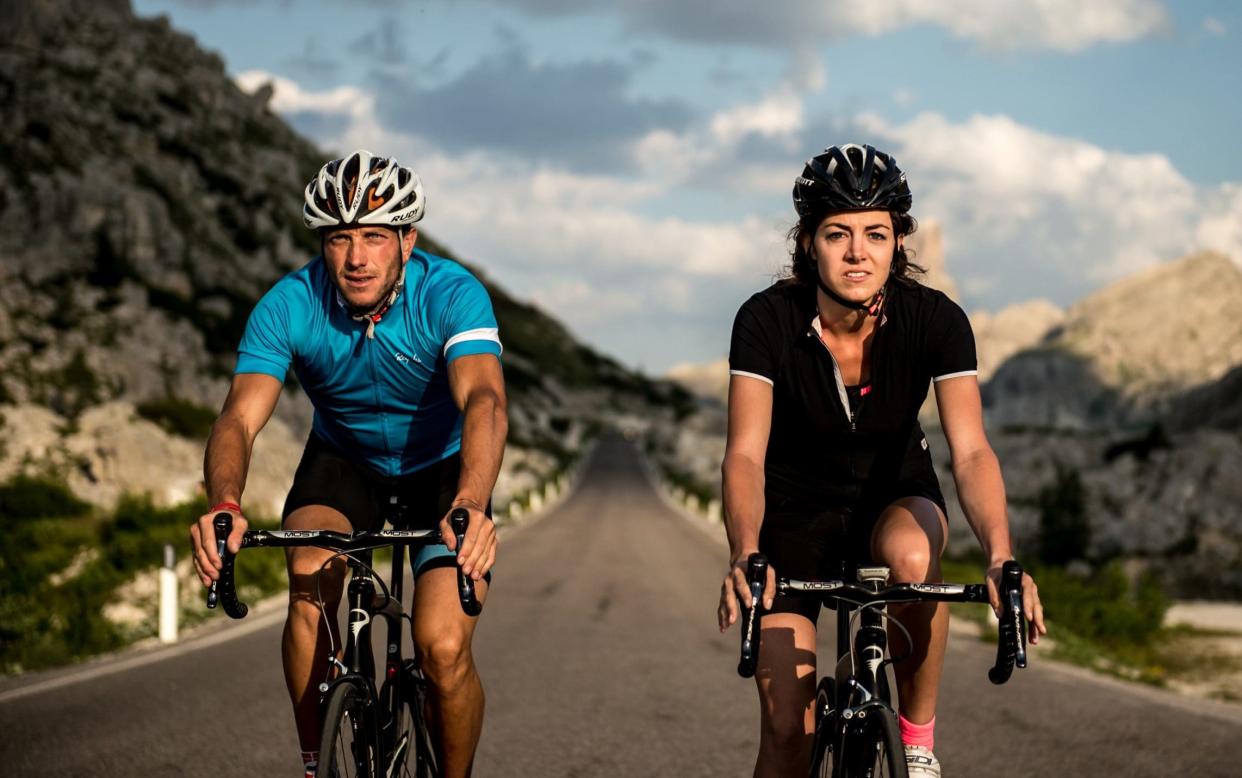
When market research giant Mintel popularised the term Mamil ('Middle aged man in Lycra') in 2010, it was seen as a modern rethink of the midlife crisis.
Gone were the flashy sports cars and roaring motorbikes of old. The modern man was re-inventing the wheel by trading in his former showpieces for a trendier model: the (not so) humble road bike.
At thousands of pounds a pop, these stylish bikes were framed as a brand new form of conspicuous consumption for men with disposable income to burn. Mid-life blokes who would have wiled away hours on the golf course were now donning Lycra and leaving little to the imagination (regarding the amount of money in their current accounts).
Given the multiple health, fitness and environmental benefits of cycling – as well as the many women and men of all ages who enjoy the sport – the term 'Mamil' can't hope to encompass all riders. There’s no denying, however, that road bikes are trendy and often eye-wateringly expensive.
In the years following Mintel's report, a generation of cyclists have matured in their love of the sport. The novices of the early 2010s are moving on to buying their second bikes, and are novices no longer.
If you are one such 'Mamil', or any other person looking to step up to a more advanced road bike, then this guide is for you. We spoke to Andy Hill, Publisher at cycling journal Rouleur, to gain his insight into the most important things to look out for when moving up to the £2,500 - £5,000 price bracket.
What are the main types of road bike out there?
If you already own a road bike it's likely you'll know this already, but if not – here's a quick refresher. There are two main types of road bike: racing and endurance.
Racing bikes feature a low handlebar set up, with the rider bent over in an aerodynamic style à la Chris Boardman (although he was riding a track bike, of course). These bikes are designed for racing over relatively short distances on road. If you are likely to use the bike exclusively during sportive events, this could be a good choice, but perhaps avoid this style of bike if you have a bit of a tummy as they are designed for riders with a slim build.
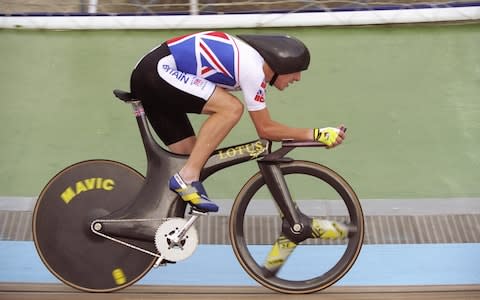
Endurance bikes are designed for comfort over long distances. They are slightly taller at the front end than race bikes, which reduces the strain on the back caused by bending over. They also have wider clearance in the frame, leaving room for wider tyres that can more effectively absorb feedback from the road.
What kind of bike should I use for bumpy rides?
Taking the road less traveled will require a bit more oomph than riding on smooth roads and taking part in the occasional sportive. If you are likely to be riding on and off road in the UK, Hill advises you consider moving beyond traditional race or endurance bikes towards gravel and adventure bikes.
"There's now the option of a bike which has a slightly less aggressive geometry than a racing bike as well as wider tyres which allows people to ride both on road and off road", he says. "The pros generally ride on 25mm tyres now and it’s been recognised that 28mm tyres makes for a very nice ride, but these adventure - or gravel - bikes, use off road tyres of 33mm in a road frame."
A post shared by Rouleur (@rouleurmagazine) on Jun 28, 2016 at 10:50pm PDT
He refers to the Surrey Hills as a relatively typical ride in the UK because it is a mix of on and off road that benefits from using wider tyres. "You’re essentially linking together little quiet country lanes, bridle paths and maybe a few gravel tracks if you’re lucky enough to find them. Gravel bikes work because they’re much quicker than a mountain bike on tarmac, but you can get off road because of the wider tyres and the clearances don’t get clogged up with mud."
Cyclo-cross bikes are like road bikes in the sense that they feature a drop handlebar arrangement and don't have full suspension like a mountain bike. Hill notes that there is a growing trend to take this type of bike off road with wider tyres too.
What kind of brakes should I use?
That depends on whether you are likely to be racing, and whether you will be riding in wet conditions. These factors will impact whether your bike should use disk brakes or a more traditional rim brake set-up.
If you're riding in grotty winter weather when there's wet and grit on the road, you may go through standard brake blocks quite quickly. Disk brakes are particularly effective in wet conditions, so if you can afford to have a designated winter bike then they'll be a good choice for that. They're doubly useful if you are intending on riding on in a group, because they're so responsive. But that's not to say they should always be preferred over rim brakes.
A post shared by D R O P S (@dropscycling) on Jul 30, 2016 at 12:51pm PDT
"If you’re a fine weather cyclist then disk brakes are probably overkill. Today’s standard brake set ups work incredibly well in dry conditions and they're pretty damn good in the wet too if you know what you’re doing."
It's open to debate whether disk brakes are useful in a racing scenario, because they can sometimes carry a weight penalty.
So, go for rim brakes if you're racing on road and in generally fine conditions, but consider disk brakes if you're bike is to be used all year round or solely in winter.
What type of groupset should I use?
The groupset is the collection of mechanical or electronic components of the bike that help with braking, running the drivetrain, shifting gear and the like. When buying around the £5,000 mark, more opportunities open up to choose the components that best suit you – but choosing between them is really a matter of personal preference because there are only subtle differences between the three major brands: Shimano, Campagnolo and SRAM.
The other decision is whether to choose an electric or mechanical groupset. Most pros use electric now, as they shift quickly and with precision – although reports of them going awry mid-cycle still bug Saturday morning club ride pelotons.
How important is the wheelset?
Very. "You need to look closely at the spec", says Hill. "Time and again the one area that tends to let down a bike in terms of the build when you see what’s being offered, will be the choice of the wheels on the bike." Often riders upgrade the wheelset of a factory built bike. "It's probably the best upgrade you can do", Hill confirms. "The wheels are rotating mass, and taking the impact. You'll really notice an upgrade, and ultimately it's where you get most bang for your buck."
What kind of wheels are best?
Again, this depends entirely on the type of riding you're likely to be doing and what your preferences are.
There are carbon wheels and aluminium wheels. "Carbon wheelsets are lighter and, if they have a deeper section rim, more aerodynamically efficient", says Hill. So why would anyone buy aluminium?
Well, carbon wheelsets might not be as safe in certain environments. "Having a carbon wheelset but no disk brakes might not be ideal for somebody going on holiday to the mountains, for example", Hill adds. "Old style, standard braking on a wet carbon rim is not great if you’re descending an alpine pass. That could get a bit sketchy."

What type of frame should I use?
Fundamentally most bikes use a groupset from one of the three major brands, so it's the frame that Hill heralds as the main differentiator. This comes back to the choice between racing and endurance, so getting the geometry of the frame right is important, but the difference between frames of the same style can be quite minimal.
"There are four different materials", Hill explains. "Aluminium, steel, titanium and carbon. Each of which has different merits. You could use the same set of componentry pretty much across the four different materials." As ever, it’s about relating it to what kind of riding you’re doing. "Sometimes more old fashioned materials like steel can offer quite significant levels of comfort compared to, say, a carbon frame, so if you're not overly worried about weight and performance, go for that. Carbon is the one if you’re looking to go faster."
Should I factor maintenance and upkeep into my decision?
No. Disk brakes may require more maintenance than rim brakes, but most maintenance issues can be resolved through a good relationship with your local bike shop. It remains important to be able to change a tyre, but in terms of the chain and the cassette, you can generally rely on your nearest reputable store. Hill recommends having the bike serviced regularly.
What mistakes should I avoid?
"I think the biggest mistake that I’ve seen people make is purchasing a bike that is the wrong size. For a new guy or girl buying a bike I think it’s important you go to a reputable bike shop and speak to a sales assistant and perhaps even get a bike fit. A lot of places won’t charge you for the bike fit if you get the bike from them, or you can potentially pay for bike fit and then buy online."
This is particularly apparent when you're spending upwards of £5k. While components can always be swapped, there's little you can do if you buy a frame that doesn't fit you.
Rouleur's picks of the best road bikes under £5,000
1. Cannondale Synapse Disc with Shimano Dura Ace
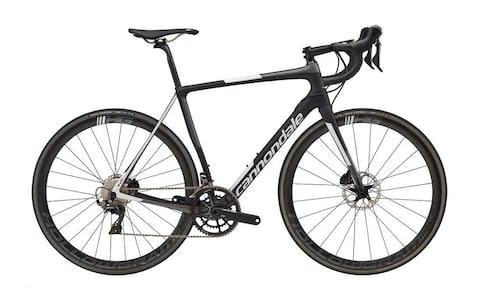
Light weight frame at 950g.
Emphasis on compliance, smooth riding and increased versatility - with clearance and mounts for mudguards.
Model of Cannondale known for it's multi-award winning design and featuring in the world's toughest races.
2. Trek Madone 9.2 with Shimano Ultegra

Built with cutting through the wind in mind, it is the epitome of aerodynamically optimised, high-speed efficiency riding, using Trek's KVF (Kammtail Virtual Foil) tube shape to change the flow of wind around the frame.
Smoother riding and greater efficiency is made from the forks absorbing bumps and vibrations, allowing for a stronger riding position for longer.
The brakes are hidden from the wind, ensuring powerful braking in all conditions.
3. Wilier Cento10 Air with Campagnolo Chorus

Ultra-efficient power transferred from the drive train to the road thanks to its asymmetrical rear.
It has departed from traditional concepts of bike, in order to create a revolutionary integrated aero bike.
The Alabarda aero bar weighs just 390g as well as its frame was designed following NACA algorithm to increase aerodynamic performance.
4. Specialized Roubaix Expert with Shimano Ultegra Di2
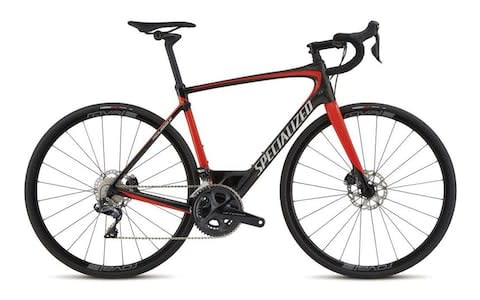
Built with strength to weight ratio in mind, it is designed so that every ounce of power put through the pedals gets transferred to the wheels
Using a piston with 20mm of travel in the head tube, the vertical compliance is greatly improved, providing greater smoothness in speed, and ride comfort - meaning rough roads are more comfortable.
Braking in wetter conditions is greatly improved thanks to the Shimano hydraulic disc brakes.
5. Canyon Ultimate CF SLX with SRAM Etap
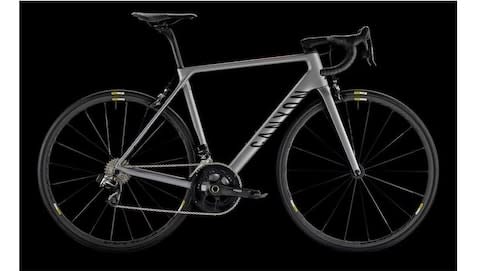
Carbon layout is optimised to increase comfort without compromising rigidity.
The seatpost is situated low and behind the seat tube in order to improve its aero dynamics, and post's suspension.
Canyon's signature 'all round racer', and therefore good for anyone who wants to ride fast - in races or just for the fun of it.
6. Cervelo S3 with Shimano Ultegra Di2

Designed with wind tunnel technology, it is a beacon of aerodynamics, evident by their record at the Ironman World Championships.
Easy to upgrade to Q rings, it's good for adapting it to use in triathlons, races or recreational rides - and the options to make all electronic, mechanical and hydraulic shifting and brake lines internal, adds to the versatility.
Partial seat tube cutout improves airflow around rear wheel, while allowing for larger tyre clearance.
7. Scott Foil 10 with Shimano Ultegra
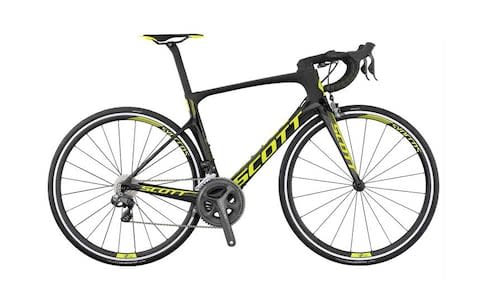
Redesigned with 89pc increase in vertical compliance compared to the older model, as well as 13pc increase in lateral stiffness at the bottom bracket, 13.5pc increase at the head tube stiffness and 6pc increase at the fork.
The handling easy to manage, and designed for minimal input from your hands or hips.
Good for cyclists looking to move into electronic shifting, and is a non-fussy design for efficient racing.
8. Ridley Noah SL with Shimano Ultegra
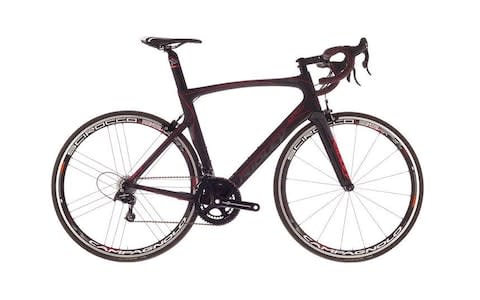
While its weight is noticeable at top speed, it means you can brake later going into bends.
The F-Split Fork channel design is revolutionary in its ability to guide incoming air away from the spokes to reduce drag.
The go to bike for Lotto Soudal riders, as well as Andre Greipel.
9. LOOK 695 ZR with Shimano Ultegra

A more traditional look, it is an affordable option for those looking for a carbon option.
It's a great "second" bike option - allowing you to have a good quality summer riding bike.
Designed with the whole bike in mind, rather than just focusing on the frame design alone.
10. Colnago CRS with Shimano Ultegra

A great entry level full carbon bike with a brand once too pricey for many riders; it has internal cable routing, a Shimano drivetrain in addition to other high-quality features.
Designed to reduce drag, it has positioned the seat collar on the upper side of the top tube, which works to also improve its aesthetics and protects it from dirt.
A slightly heavier design, it does reduce its speed, but handling is kept to a high level.
Rouleur Classic, the world’s finest cycling exhibition returns to Victoria House, London on 2-4 November. For more information and tickets please visit http://rouleurclassic.cc/

 Yahoo News
Yahoo News 
